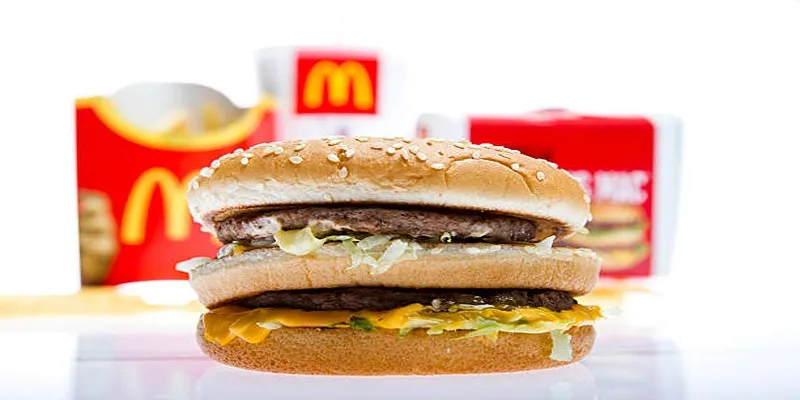Clean Bulking: Overview, Guide, and Best Foods
Clean bulking is a strategic approach to building muscle mass without excessive fat gain. This method optimizes nutrition and training for maximum muscle growth. Our comprehensive guide covers the principles of clean bulking, provides a step-by-step plan, and lists the best foods to fuel your gains. Here is everything you need to know.
What is Clean Bulking?
 Clean bulking is a
structured approach to gaining lean mass by focusing on nutrient-dense foods
and maintaining a reasonable caloric surplus. Unlike “dirty bulking,” which
involves eating anything to achieve high caloric intake, clean bulking targets
lean body mass gain with minimal fat accumulation.
Clean bulking is a
structured approach to gaining lean mass by focusing on nutrient-dense foods
and maintaining a reasonable caloric surplus. Unlike “dirty bulking,” which
involves eating anything to achieve high caloric intake, clean bulking targets
lean body mass gain with minimal fat accumulation.
Principles of Clean Bulking
Clean bulking revolves around three fundamental principles:
- Controlled Calorie Surplus: Consume 10-20% more calories than your maintenance level to build muscle without gaining excess fat.
- High-Quality Nutrition: Focus on whole, nutrient-dense foods that provide a balance of macronutrients (proteins, carbohydrates, and fats) and essential micronutrients (vitamins and minerals).
- Consistent Strength Training: Engage in a rigorous resistance training program to effectively utilize added calories for building lean mass.
Benefits of Clean Bulking for Muscle Building
Clean bulking offers several advantages for efficiently building lean muscle mass. This method emphasizes high-quality food with a moderate increase in caloric intake to support optimal muscle growth.
Better Body Composition
Unlike dirty bulking, which often leads to significant fat gain, clean bulking helps maintain a healthier body composition. By responsibly managing calorie intake and focusing on nutrient-dense foods, you can minimize fat deposition while maximizing muscle-building progress. This approach not only results in a more attractive physique but also simplifies the transition to a cutting phase.
Improved Performance and Recovery
Clean bulking emphasizes whole, nutritious foods that provide essential vitamins, minerals, and antioxidants. These micronutrients are crucial for energy production, muscle function, and recovery. Top-quality nutrition leads to better gym performance, reduced muscle soreness, and quicker recovery between sessions.
Long-term Health Benefits
Clean bulking supports muscle building and promotes overall health and well- being. Choosing nutrient-dense foods while avoiding excess processed foods and sugars enhances cardiovascular health, digestive function, and immune competency. This bulking method enables you to achieve fitness goals without compromising long-term health.
Diet of Clean Bulking: Macros, Calories, Best Foods
Calculate Your Macros and Calories
Determine your optimal calorie intake and macronutrient balance. Use an online calculator or consult a nutritionist to find your Total Daily Energy Expenditure (TDEE). Aim to consume 10-20% more than your TDEE for clean bulking.
The standard clean bulk macro split is:
- Protein: 1.6 - 2.2 grams per kilogram of body weight
- Carbohydrates: 45-55% of total calories
- Fats: 20-30% of total calories
Best Foods for Clean Bulking
During the clean bulking phase, focus on nutrient-dense whole foods:
Protein Sources
- Lean Meats: chicken breast, turkey, and lean beef
- Fish: Salmon, Tuna, Tilapia
- Eggs and Egg Whites
- Greek yogurt and Cottage Cheese
Complex Carbohydrates
- Brown rice and Quinoa
- Sweet potatoes and oats
- Whole grain bread and pasta
Fruits: Banana, Berries, Apples
Healthy Fats
- Avocados and Nuts
- Olive oil and Coconut oil
- Chia seeds and flaxseeds
Incorporate a variety of these foods into your meal plan to create a diverse, nutrient-rich diet. Aim to eat 4-6 balanced meals throughout the day, every 2-3 hours, to ensure a consistent flow of nutrients to your muscles.
Clean Bulking Workout Routine and Exercises
 An effective clean
bulking strategy requires an efficient training program. Pair resistance
training with proper nutrition to minimize fat gain while building muscle.
Here’s a guide to creating an effective workout plan for clean bulking.
An effective clean
bulking strategy requires an efficient training program. Pair resistance
training with proper nutrition to minimize fat gain while building muscle.
Here’s a guide to creating an effective workout plan for clean bulking.
Basics of Resistance Training
Resistance training is the cornerstone of any clean bulking routine. Focus on compound exercises that target multiple muscle groups, such as squats, deadlifts, bench presses, and rows. These exercises trigger anabolic hormones, promoting muscle growth and strength gains.
Plan for 3-4 weekly resistance training sessions, allowing sufficient rest between workouts. Base your routine on progressive overload by gradually increasing weight, reps, or sets to continuously challenge your muscles.
Optimal Rep Ranges and Volume
Use a combination of rep ranges to target both muscle hypertrophy and strength during clean bulking:
- 6-8 reps: Focus on heavy compound lifts for strength and power gains.
- 8-12 reps: Target muscle hypertrophy and growth.
- 12-15 reps: Enhance muscular endurance and increase blood flow to muscles.
Complete 3-4 sets per exercise, aiming for a total weekly volume of 10-20 sets per muscle group. This provides enough stimulus for growth without overtraining.
Cardio Incorporation and Recovery
While resistance training is the primary focus, don’t neglect cardiovascular exercise. Include 1-2 low-intensity cardio sessions weekly to support heart health and improve recovery. Activities like brisk walking, swimming, or cycling can enhance overall fitness without compromising muscle gains.
Conclusion
Consistency and patience are key to successful clean bulking. By adhering to the guidelines outlined here and incorporating nutrient-dense foods into your diet, you can build muscle with minimal fat gain. Track your progress, make necessary adjustments, and enjoy transforming into a stronger, leaner version of yourself.


